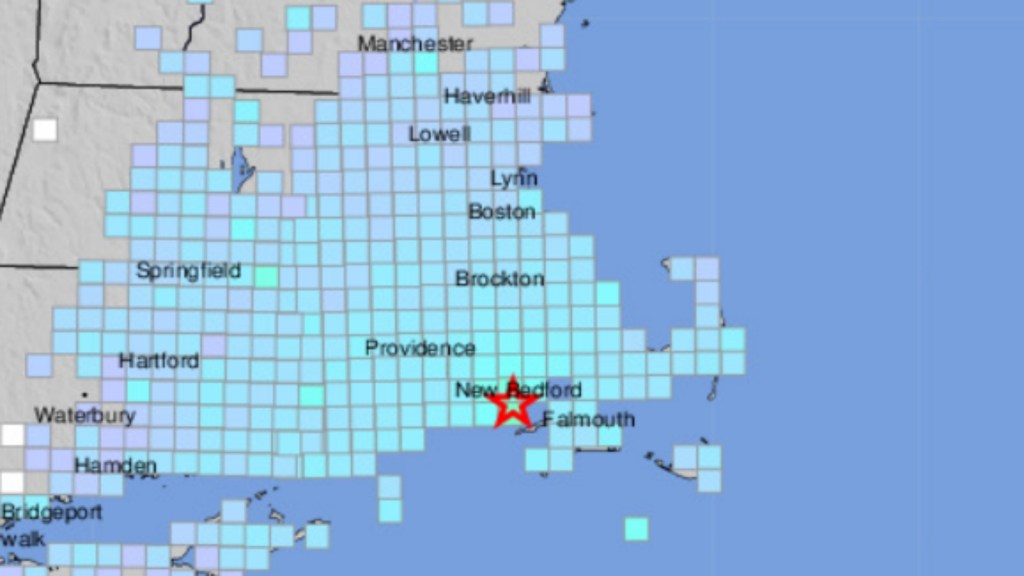By Nick Mancusi
Massachusetts is a relatively geohazard free place. If you consider bad weather a hazard, then Boston has plenty of them. It will get the occasional tropical storm or small blizzard, but they’re usually not very common and are nothing really to worry about. But very recently, on November 9th of this year, something pretty out of the ordinary hit Massachusetts. An Earthquake.
Map of where the earthquake was felt around Massachusetts
I had woken up in my dorm that morning not in my home in Boston, but in my dorm here at Macalester. I had made myself some breakfast and started checking my email like I usually do in the morning. While eating my oatmeal, I got a call from my mom. As I picked up my phone and started talking, she started laughing and telling me that I wasn’t gonna believe what just happened. She told me that an earthquake with a magnitude of about 3.6 hit Massachusetts and was felt around New England. She told me she felt a rumbling that she thought was a huge truck barreling down the street next to our house. The mild shaking lasted a couple of seconds, then stopped pretty quickly after, my mom told me. While not a very big earthquake, the shaking did cause minor property damage in some areas, like the city of New Bedford which unfortunately had multiple displaced families after the incident. I was very surprised. I didn’t even know that Massachusetts could get earthquakes. But apparently, there is a history of seismic activity in Massachusetts and the surrounding area of New England.
Local news coverage of the earthquake
Small earthquakes have been happening in the Northeast region of the United States for a long time. I was convinced that only California and the West coast get earthquakes in the US. But In Massachusetts, there have been around 9 earthquakes of the same magnitude since the 1700s, the last one being in 1976. These earthquakes are not really due to fault lines like the famous San Andreas, but are caused by pressure that builds up in the earth's crust. Many colonial towns back in the late 1600s recorded lots of earthquakes in the surrounding areas of the Northeast as well, like New York and Maine. Many Native Americans in the region at that time created stories and legends about the earthquakes they felt, as mini ones were felt pretty frequently back then.
Earthquakes in the Northeast from 1975-2017
Painting of the Newburyport earthquake from 1744
Though I wasn't there to experience maybe my one chance of experiencing a reasonable Massachusetts earthquake, I feel like it has given me the opportunity to delve deeper into the geohazards of where I live and uncover the geological events that I hadn't known existed.
Refrences:
“Earthquakes Hazards.” Northeast States Emergency Consortium, nesec.org/earthquakes-hazards/.
reports, Staff and wire. “What to Know About the Earthquake That Hit Massachusetts on Sunday.” NBC Boston, NBC10 Boston, 9 Nov. 2020, www.nbcboston.com/news/local/what-to-know-about-the-earthquake-that-hit-massachusetts-on-sunday/2226483/.

Great post! I thought it was really interesting how earthquakes like the one you described aren't produced by faults along plate boundaries, but instead they are produced by pressure built up in the crust. You mentioned how mini earthquakes were more common back in the day. Why do you think they are less common nowadays?
ReplyDelete